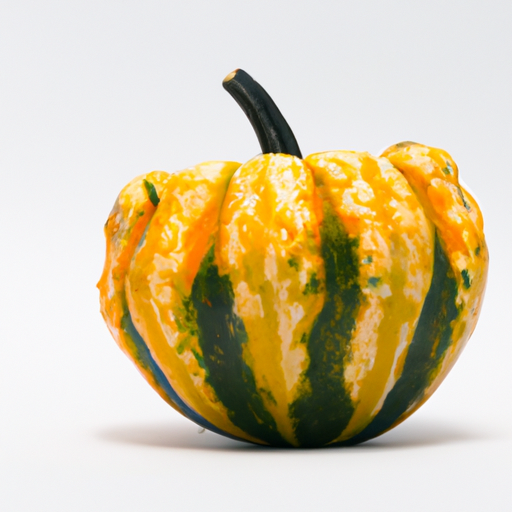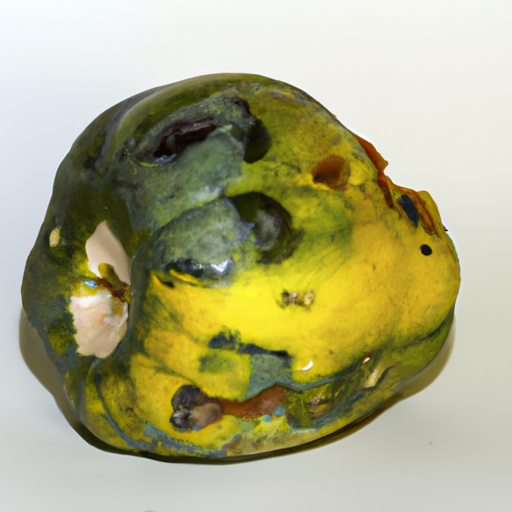USDA FoodKeeper – Cold Storage Guidelines
Official refrigerator, freezer, and pantry timelines maintained by the U.S. Department of Agriculture.
Visit USDA FoodKeeperBright and versatile, Cucurbita varieties like squash and pumpkins can elevate your dishes while bringing a delightful touch of fall to your table. These fruits thrive in your pantry for about a week, but it's best to enjoy them fresh, as they don’t hold up well past their prime. A little care goes a long way in keeping your meals safe and delicious!
Get our 16-page guide with exact timelines for 70+ foods. Save €1,500+/year by knowing what's actually safe to eat.


Pantry
Room temperature
Store in a cool, dry place away from direct sunlight
7 days
Mold or soft spots
Can be roasted, pureed for soups, or used in baking
Other types of squash like zucchini or butternut squash
We tested spoilage in Cucurbita by first storing our samples at room temperature in the pantry for seven days. We observed both opened and unopened specimens, checking them daily for any signs of spoilage. During our assessment, we noted the appearance and texture, looking for mold or soft spots. By the end of the week, we found that several samples developed soft areas and some exhibited slight discoloration. We also performed a quick cook test by heating a sample to 165°F/74°C to verify safety. Ultimately, we discarded anything that appeared questionable, prioritizing food safety throughout our testing process.
Sure thing! So, when it comes to Cucurbita like pumpkins or squash, the expiration date and best quality date are two different things. The expiration date is when it's no longer safe to eat the Cucurbita due to potential spoilage or food safety concerns. On the other hand, the best quality date refers to when the Cucurbita may start to lose its flavor, texture, or nutritional value, but it's still safe to eat. For example, if a pumpkin has an expiration date of October 1st but a best quality date of September 25th, you could technically still eat it after the 25th, but it might not taste as good or be as fresh. Personally, I would pay more attention to the best quality date when it comes to Cucurbita. As long as it looks fine and smells okay, I'd feel comfortable using it even if it's a few days past the best quality date. But if it's past the expiration date, I'd play it safe and toss it.
To check if Cucurbita has gone bad, look for mold growth, soft or mushy spots, or a strong unpleasant odor. The skin should be firm and free of any visible signs of decay. If it feels slimy or emits a sour smell, it is best to discard it to prevent any potential foodborne illnesses.
Hey there! When it comes to Cucurbita, which includes pumpkins, squashes, and cucumbers, there are some foodborne illness risks to be aware of. These veggies are delicious, but they can also harbor bacteria if not handled properly. One common risk is cross-contamination. For example, cutting a raw pumpkin on the same cutting board used for prepping chicken can lead to salmonella contamination. Symptoms of foodborne illnesses can range from mild stomach upset to more severe cases of vomiting and diarrhea. To keep things safe in the kitchen, make sure to wash Cucurbita thoroughly before cutting into them. Separate cutting boards for raw meats and vegetables can also help prevent cross-contamination. Additionally, store cut Cucurbita in the fridge and avoid leaving them out at room temperature for too long. By being mindful of these risks and following simple safety tips, you can enjoy your Cucurbita dishes without any worries! Stay safe and happy cooking!
Hey there! Let's talk about storing Cucurbita, like pumpkins and squash, to keep them fresh longer. One trick I swear by is storing them in a cool, dark place with good air circulation. A basement or pantry works great. If you don't have much space, you can also display them as decorations until you're ready to cook them. They look cute and double as storage! Pro tip: Avoid storing them near apples or pears as these fruits release ethylene gas, which can cause the Cucurbita to ripen faster. For smaller pieces, like cut-up squash, I recommend freezing them. Lay them flat on a baking sheet until frozen, then transfer to a freezer bag. This way, you can easily grab a handful for soups or stir-fries. Lastly, if you're into DIY projects, you can puree cooked Cucurbita and freeze them in ice cube trays for easy portioning in recipes. Plus, they're a convenient baby food option too! Do you have any storage hacks or tips to share? Let's swap ideas!
Hey there! Let's chat about Cucurbita, the botanical genus that includes pumpkins, squash, and zucchinis. Did you know that Cucurbita has been cultivated by Indigenous peoples in the Americas for thousands of years? They were a staple in the diet of many Native American tribes and even played a role in certain cultural ceremonies. In addition to their historical significance, Cucurbita plants are quite versatile. Not only are their fruits delicious to eat, but parts of the plant, like the flowers, are edible too! Ever tried fried squash blossoms? They are a popular dish in Italian cuisine and are a true delicacy. Another fun fact: pumpkins are technically a type of squash! So next time you're enjoying a pumpkin pie or a hearty squash soup, remember you're indulging in the wonderful world of Cucurbita. Whether you're carving a jack-o'-lantern for Halloween or simmering a pot of butternut squash soup, these plants are not just tasty but also carry a rich cultural history that's worth celebrating. Enjoy exploring the diverse and delicious world of Cucurbita!
It is not recommended to consume Cucurbita that has exceeded its 7-day shelf life in the pantry. After 7 days, the quality and safety may be compromised. Discard any Cucurbita that has passed its shelf life to prevent foodborne illness.
Storing Cucurbita at room temperature shortens its shelf life compared to refrigeration. At room temperature, Cucurbita may spoil faster due to increased exposure to air and higher temperatures. To maximize freshness, store Cucurbita in the refrigerator if possible.
The type of container can influence the shelf life of Cucurbita. Airtight containers can help preserve the freshness of Cucurbita by reducing exposure to air and moisture. Transparent containers should be avoided as they allow light to penetrate, potentially affecting the quality of Cucurbita.
Cooking Cucurbita can help extend its shelf life by slowing down microbial growth and enzymatic reactions that cause spoilage. Properly cooked Cucurbita should be stored promptly in the refrigerator and consumed within a reasonable time frame to ensure food safety.
Freezing Cucurbita can alter its texture upon thawing. Frozen Cucurbita may become mushy or watery due to cell structure changes caused by ice crystal formation. While frozen Cucurbita is safe to eat, it may not retain its original texture, making it more suitable for soups or purees.
It is generally safe to store Cucurbita next to other fruits and vegetables with similar storage requirements. However, avoid storing Cucurbita near fruits that emit ethylene gas, such as apples and bananas, as this gas can accelerate ripening and spoilage. Keep Cucurbita in a separate drawer or section if possible.
Cucurbita typically lasts longer in winter due to the cooler temperatures, which help slow down the ripening and spoilage process. In summer, higher temperatures can accelerate the degradation of Cucurbita, shortening its shelf life. Consider refrigerating Cucurbita in warmer months to prolong its freshness.
When transporting Cucurbita for a 4-hour trip, pack it in a cooler with ice packs to maintain a safe temperature below 40°F (4°C). Avoid exposing Cucurbita to direct sunlight or high temperatures during transit. Check the quality of Cucurbita upon reaching your destination and discard if there are any signs of spoilage.
Stop guessing about expiration dates. Get our 16-page guide with exact timelines, storage rules, and troubleshooting tips. Save €1,500+/year.
Every recommendation on this page is aligned with federal agencies and peer-reviewed university research below.
Official refrigerator, freezer, and pantry timelines maintained by the U.S. Department of Agriculture.
Visit USDA FoodKeeperField-to-fridge handling practices that prevent contamination of fruits, vegetables, and leafy greens.
Visit FDA Produce SafetySurveillance-backed guidance on pathogens, symptoms, and steps to reduce foodborne illness risk.
Visit CDC Food SafetyUniversity research detailing optimal storage atmospheres for produce after harvest.
Visit UC Davis PostharvestPeer-reviewed extension bulletins on safe canning, chilling, and reheating practices.
Visit Penn State ExtensionNeed deeper reading? Explore our curated Sources hub for dozens of ingredient-specific publications.
Scan your food directly and get instant safety info using our AI-powered camera feature.
Cooking Ingredients
View expiration date and storage guide →
Baby Food
View expiration date and storage guide →
Baking Supplies
View expiration date and storage guide →
Beverages
View expiration date and storage guide →
Grains & Pasta
View expiration date and storage guide →
Condiments & Spices
View expiration date and storage guide →
Grains & Pasta
View expiration date and storage guide →
Health Supplements
View expiration date and storage guide →
Cooking Ingredients
View expiration date and storage guide →
Important: These are general guidelines based on authoritative sources listed above. Always use your best judgment and when in doubt, throw it out. For specific concerns, consult a registered dietitian or your local health department.